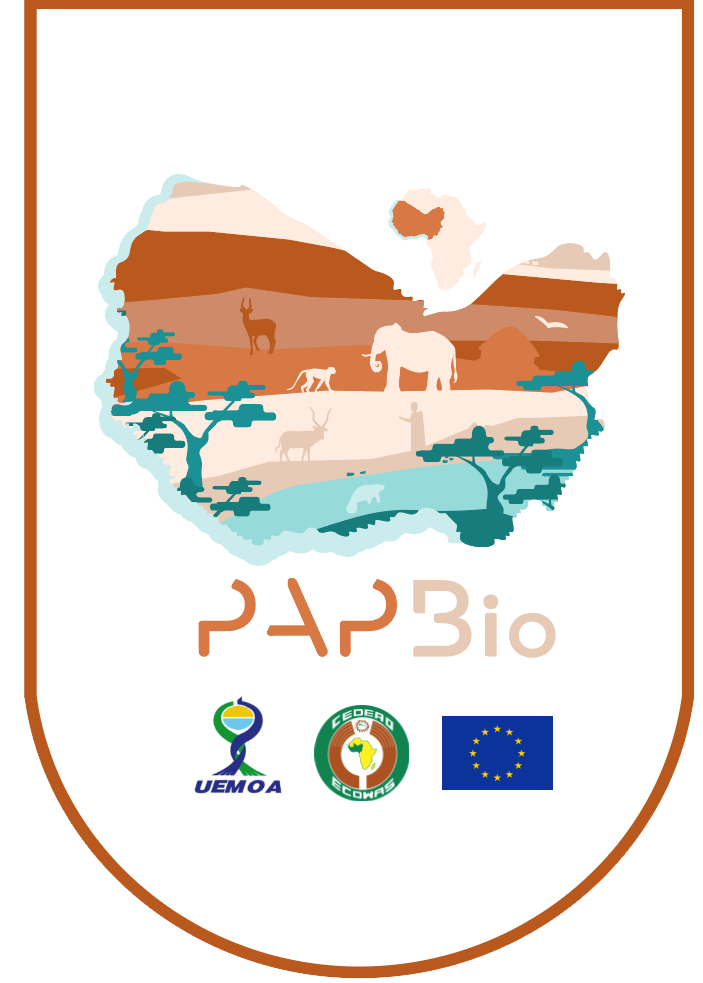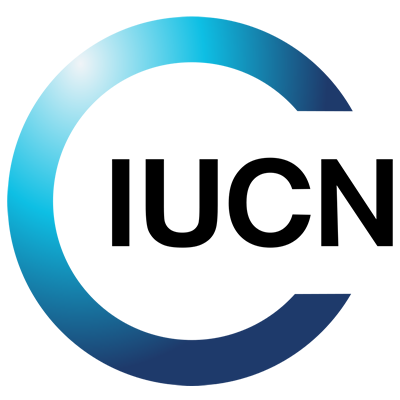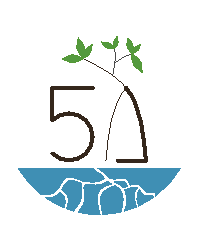
Management of mangrove forests
from Senegal to Benin
"PAPBio C1-Mangroves"
The project aims to achieve integrated protection of biodiversity and fragile mangrove ecosystems in West Africa and their enhanced resilience to climatic changes.
 |
 |
 |

With the support of the European Union
Frequently Asked Questions
Here you will find a series of some of the most common questions and their answers. This list is updated regularly.
Please click on the question to view the answer.
Application Form
- Candidates may submit their application by e-mail in exceptional circumstances - what is an example of an exceptional circumstance?
In the event of a proven power/Internet failure, a document from the service provider proving the failure will be requested to justify the exception.
Budget/eligible costs
- Can the purchase and maintenance of a vehicle be included in an average grant proposal?
Yes, the purchase of a vehicle can be included in the project proposal if it is necessary for the implementation of the project. The budget category will be "Equipment and supplies for the project".
- Why is there a minimum 5% co-financing requirement for funding of more than EUR 100,000? Is this a mandatory requirement?
5% funding is, in fact, the absolute minimum. Co-financing by beneficiaries is a routine requirement in the EU funding mechanism. This is mandatory.
- Section 3.3.6 indicates that a maximum of 7% of indirect costs is allowed. Is this figure flexible, because our costs for managing this type of project are over 7%?
The PAPBio C1 - Mangroves project is governed by the rules and regulations of the European Commission and 7% is the maximum allowed. Similarly, a fixed rate of 7% ensures that direct costs are not duplicated. For example, if rent or electricity are budgeted, the % of indirect costs can be revised downwards.
- Can the lead applicant also charge a maximum of 7% of indirect costs to the expenses of the co-applicants, to cover the costs of managing the partnership, even if the co-applicants also charge indirect costs? Or is the lead applicant only allowed to charge indirect costs to their own direct expenses?
The maximum of 7% is applied to the total project budget. If the total budget is €100,000, the maximum amount of indirect costs allowed is €7,000. The allocation of indirect costs among the co-beneficiaries is an issue to be resolved internally within the consortium. However, applicants are encouraged to treat their partners fairly and not to deprive smaller entities of overheads.
Organismes éligibles
- Can an organisation based in one country of intervention apply in another project country?
A legal entity incorporated in one country of intervention may apply for a grant in another country in the same region, provided that this legal entity has a permit and the capacity to operate in the other OACPS country. If the grant is awarded, the challenges will be operational: opening a bank account, hiring employees under local legislation, etc.
- Is an organisation based in the EU with a registration in Africa eligible? If the answer is yes, how should the organisation apply?
The organisation can apply either through its organisation based in the EU or through its registered office in Africa. It is not possible to apply through both.
Eligibility
- What is the difference between a separate legal entity that can be considered a national organisation, and the branch of an organisation from an EU Member State?
The criterion is whether or not there is a separate legal entity. A legal entity is defined as a legally registered association, company, partnership, property, or fund. A separate legal entity has the legal capacity to (1) enter into agreements or contracts; (2) assume obligations; (3) incur and pay debts; (4) initiate legal proceedings and be prosecuted under its national law; and (5) be held liable for illegal activities. If this is not the case, then the organisation cannot be considered a separate legal entity, but as a branch of a parent organisation based in an EU or OECD Member State.
The existence of a registration in an OACPS country or a Memorandum of Understanding with a government agency does not make the branch a legal entity.
- What is the difference between a co-applicant and a partner?
The term "co-applicant" is applied at the application submission stage. The co-applicant is included in the grant application, alongside the main applicant. The term "partner" is applied at the execution stage. Normally, a partnership agreement (execution) is drawn up between the lead applicant (coordinator) and their partners.
- Can having a Memorandum of Understanding with a relevant government agency be considered "established" in a country of intervention?
No, being established means being incorporated by an instrument of national law. For example statutes, instruments of incorporation, etc.
- Can an organisation currently running an EU-funded project submit a proposal to the project?
Yes, if the proposal does not overlap with project(s) already funded by the EU. See the provisions on eligibility of costs in the Guidelines for Applicants. Duplication must be avoided and the co-financing must not come from another EU grant.
- Can provincial governments apply as lead or co-applicants?
Yes, they can apply as applicants or co-applicants.
- Noting that protected areas, NGOs managing protected areas, conserved areas, or areas conserved by indigenous and local communities, may apply as lead applicant only when they are part of a consortium with other organisations, can they also apply as co-applicants?
Yes, this is possible.
- To be able to apply as a lead applicant, what is the difference between a "local" and a "national" CSO/NGO/NPO?
This depends on what is described in their legal statutes or founding documents (objectives, purpose and geographical scope), e.g. a women's association or a community-based organisation dealing with problems at village level/a national NGO working nationwide and not just in a specific area.
- What is the difference between national organisations and local organisations?
Whether an organisation is defined as national or local is specified by the organisation's legal statutes (founding documents) which describe the objective, purpose and scope of its mandate.
- Can there be more than one co-applicant per proposal?
Yes, this is possible.
- Can an organisation apply for more than two grants as a co-applicant per region? (e.g. apply as a co-applicant on three separate projects).
An organisation can submit a limit of 2 proposals as a lead and 2 as a co-applicants on the project’s landscapes.
Activities eligible
- Applicants must not offer financial support to third parties through cascading grants. Does this mean that third parties must be part of the application as co-applicants?
Applicants cannot set up a cascading grant at their level using project funds.
Cascading grants are not allowed. This means that beneficiaries of the grant cannot redistribute it to third parties. Applicants can set up a consortium/partnership to include local NGOs for the implementation of the proposed project. The structure of a typical proposal includes a lead applicant and co-applicants. Partners will be considered as co-beneficiaries of the schemes financed by the project, with the same rights and obligations.
- As cascading grants to organisations are not allowed, can individual consultants be hired as sub-contractors?
Subcontracting is a valid budget category. The costs of services provided by third parties are eligible. Please note that cascading grants are different from sub-contracting.
- The purchase of land is not eligible for funding, but what about funding to establish agreements to change land use or other activities?
Any activity that changes access to land or resources affecting rights holders or stakeholders triggers ESMS safeguards, and therefore requires further investigation. No general approval is possible without investigation. In view of the short period of the grant agreement, sustainability issues need to be addressed.
Official support
- Organisations from an EU Member State, organisations from EU overseas countries and territories, organisations from an OECD Member State, regional and international organisations, must show "official support from the relevant national authorities and agencies" - does this have to be a letter, or is a simple exchange of emails sufficient?
A letter of support is required. An e-mail is not sufficient proof from a legal point of view.
- Do national NGOs (CSOs, NFPs, etc.) also need a letter of support from governments, or just regional/international NGOs?
Yes, they need a letter of support from the national authority to operate in protected areas, unless the applicant is the authority concerned.
Number of applications
- Can an organisation apply for more than two grants as a co-applicant?
There is a limit of 2 proposals as a lead and 2 as a co-applicants.
- Is there a quota of proposals for protected and conserved areas?
No, as long as there is sufficient capacity for implementation and there is no duplication.
- Is it possible to submit two proposals for different projects in different locations?
Yes, an organisation can submit projects as lead and/or co-applicant in different regions.
Partnerships
- Are there any other requirements related to the way in which the responsibilities of the budget or the activity are divided between the lead applicant and the co-applicant(s)? For example, does the lead applicant have to manage a minimum percentage of the budget, or carry out a certain percentage of the activities?
There are no explicit requirements regarding the distribution of the budget and the activities. Common sense dictates that the lead applicant should have a higher financial and operational capacity and that the work plan and budget should be designed accordingly. Core activities, coordination and management are the responsibility of the lead organisation.
- Is "joint and several liability" required for partnership agreements?
After the grant has been awarded, the lead applicant and the co-applicant(s) must reach an agreement stipulating "joint and several liability". They will become co-beneficiaries of the IUCN grant.
Portal
- What can I do if I don't receive the validation email to confirm my account once I have registered on the Portal?
Please check all the folders in your inbox, including SPAM or PROMOTIONS folders. If you have not received the confirmation e-mail, it is possible that your e-mail system is blocking incoming e-mails from the application portal. As a last resort you can report your concern to support@subventions-mangroves.org specifying the date and time of your attempt.
Reports
- What is meant by "activity reports" - are they documents such as annual reports and donor reports?
Yes, at least the annual report on the activities of an organisation.

UICN - SENEGAL
Rue MZ-77
Mermoz
DAKAR - SENEGAL

Copyright © 2020 UICN - Design and hosting by 9bisfactory.net - Powered by Twokiwi